The cost-effectiveness of using BMW-approved waterborne paint has been improving at a rapid pace over the last decade. The primary reason to use the technology is no longer just environmental protection, but is now the significant savings it offers to collision repair facility operators. Waterborne paint saves labor time, energy cost, materials expense, and reduces color match or panel blending problems.
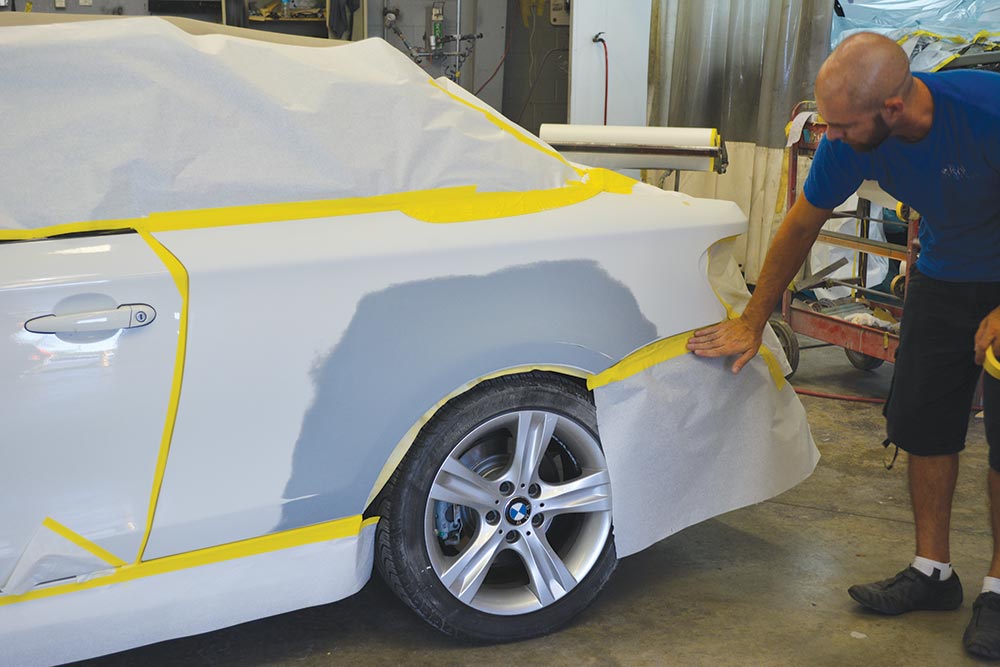
Use tape and masking paper that is water resistant. If waterborne paint soaks through the tape or paper, it will adhere to vehicle surfaces underneath.
European automakers began eliminating volatile organic compounds (VOCs), which are ozone pre-cursors, from automotive coatings in the 1990s. The U.S. EPA jumped on the bandwagon in 1999 with strict limits on VOC content in all automotive coatings.
The limits are, of course, a good thing. VOCs contribute significantly to formation of ground-level ozone, which is a major component of the smog we see in high car-count cities. Breathing ozone can damage lungs, inflame asthma, and cause other respiratory problems.
Waterborne paints meet all current limits for automotive coatings VOC content. We have come down from approximately 75% solvent in conventional basecoats to only 10% solvent in waterborne basecoats, and have reduced solvent by up to 60% in clearcoats.
Out of the Solvent Fog
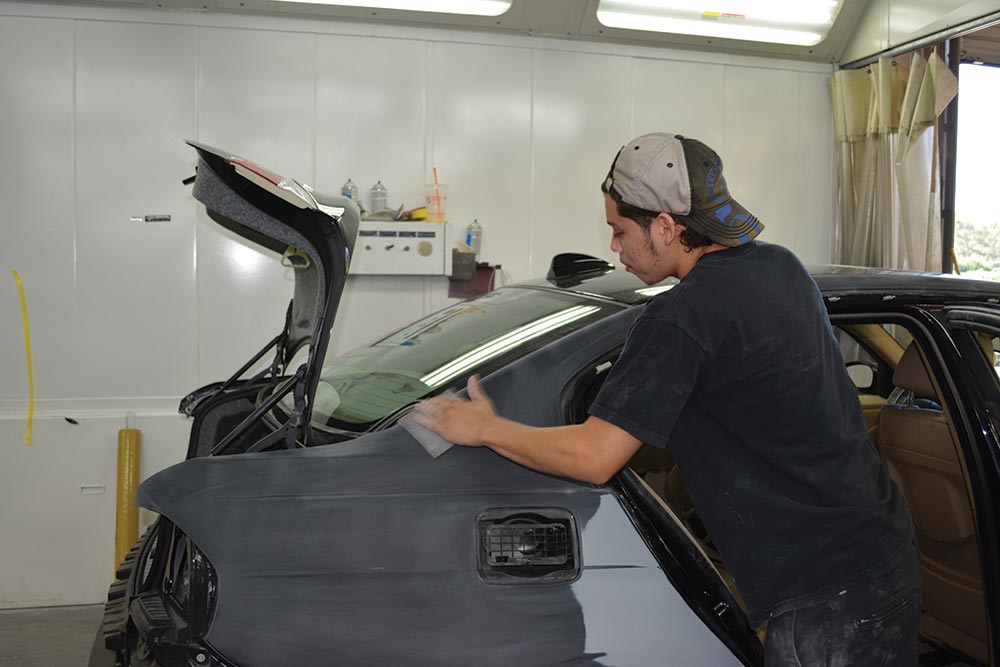
Because waterborne is a thinner paint film than solvent, it tends to lay down in cracks or any other flaws in the surface, changing the light refraction. Sanding with a finer grit – 800 or finer – is critical to getting the surface smoothness needed for painting.
BMW became the first OEM to use waterborne paints in the U.S when in 2010 it began using the technology in its factory in Spartanburg, South Carolina. In addition to the environmental benefits of cutting VOC emissions, the BMW switch from solvent to waterborne basecoat allowed a new way of applying primer that significantly reduced equipment, paint application and heat curing costs.
BMW factories have sophisticated control of temperature, humidity, and other paint environment conditions, plus robotic technologies that work with the precision of the best human painter, but faster. Could waterborne cost reduction benefits also apply to the aftermarket, where collision shops have to be more adaptable to variations in local weather impact on their painting environment, don’t have robot technology, because they typically paint only a part of the vehicle body, and have color match objectives that the factory doesn’t have to address?
With BMW ColorSystem, the answer is emphatically yes. ColorSystem is a water-based line that provides a factory-like finish, with shorter drying times than conventional solvent, excellent color match, high gloss, plus high solids and UV protection for durability.
Better Coverage
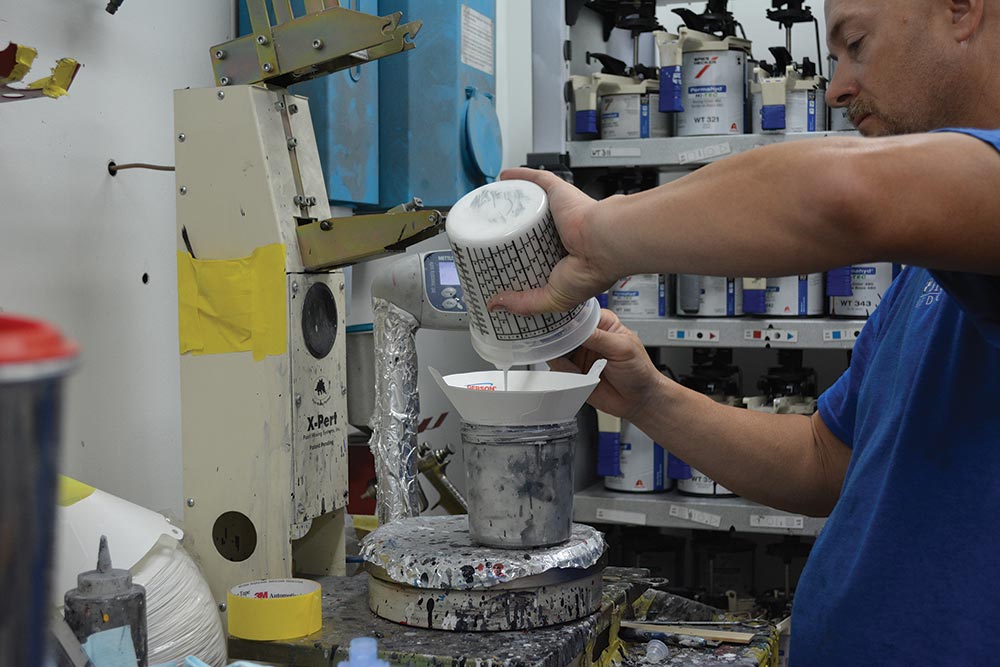
Unlike a solvent resin, which if clumped together will re-dissolve in the presence of more solvent, a clump of waterborne paint that has dried will not re-dissolve. Make sure to filter your paint after mixing, in addition to any mesh filtration that is built into your gun.
As solvent content of basecoats came down, solids increased. Waterborne basecoats contain 20% pigment in their metallic or pearlescent formulations, one-third more than the 15% pigment content in solvent-borne basecoats. Waterborne allows painters to get the same coverage and hiding ability while spraying less paint. Using the BMW ColorSystem saves material cost and application time.
With the proper air flow, water evaporates faster than solvent, so you get shorter flash times. Faster flashover and better coverage leads to shorter cycle time and more throughput.
Such a Flake
The flakes of pigment that give a paint its color drift down from the surface to the bottom of the paint film as it dries. Think of the flake as a very small piece of metal that is in the paint as it is sprayed. Instead of drifting horizontally like a feather in a gentle breeze, gravity makes paint flakes tend to turn sideways so they can sink faster. Once the flake reaches the bottom, it flattens, or “flops” into a more horizontal position.
Mirror, Mirror, In the Paint
Metallic flakes function somewhat like a mirror, except their surface is covered with whatever color the paint is supposed to represent. As light reflects out of that mirror and through the paint, it lightens the appearance of the color.
If the flake isn’t at an angle where it can reflect the light as the factory intended, the color will not match the rest of the vehicle. For example, if the flake is still vertical when the paint dries, an observer will see very little light reflected out, and the finish will appear darker than areas in which the flakes are in a flat or more horizontal position.
Time Travel
Paint that dries before the flakes have reached the intended depth in the film will lock the flakes in at the wrong angle. It won’t matter that you picked the color that is recommended to match the factory finish, or that you followed the paint mixing instructions correctly. Flakes that dry while more vertical than intended cause a color match failure.
Getting the correct drying time is also critical to the proper appearance of pearl finishes, even though the pigment particles are spherical instead of flat. There is no angle of reflection to a sphere. The pearl reflects the same amount of light from any part of its round surface. The depth the pearl has reached in the film by the time the paint has dried however, affects how much of that light reaches the eye of the viewer. Pearlized pigment particles that dry in the middle of the film will reflect more light, and appear brighter to the viewer than pearls that reach and settle at the bottom.
Controlling the Flop
You cannot control how quickly a metallic flake or pearlized particle sinks in the paint film. You can, however, manipulate the speed at which the paint dries, and thereby lock the flake or pearl in place at the desired level within the film.
With solvent, you controlled the drying process primarily by putting in the right reducer and keeping the booth in the paint manufacturer’s recommended temperature range. Yes, there were different hardeners for different coatings, but in general, there were not many other factors to manipulate in order to control the time it took to dry the finish enough to remove the vehicle from the booth.
With waterborne materials, a variety of factors affect the length of time it takes for the paint to dry. How “wet” you spray, the rate of airflow in your booth, the humidity level, and booth temperature are all factors that are at least equal to reducer in their importance for controlling drying time for waterborne paints.
You have to spray wet enough to allow the metallic flakes time to settle down to the desired level in the paint film before it dries. One exception is colors for which the factory wants the flakes to tilt a little in the film rather than lie flat. The tilt makes the flake reflect light to the side, rather than perpendicular to the flat surface. For this sideways tilt, you add a flop adjuster, sometimes called a “kickstand.” Like the device that keeps a bike from falling, flop adjusters lock the flake in a pre-set angle before the paint dries. They make the color appear lighter when looked at from the side, but darker when seen straight on.
The biggest factor determining how wet you spray is the paint itself. The BMW ColorSystems software that identifies the correct paint mix ratio for a given color will give you several choices of paint color formulas. Each different formula works best for a given ambient temperature and humidity to give the desired color. Choosing which formula to mix and spray is similar to making the decision for solvent, whether to use a slow, medium, or fast reducer.
| Waterborne Spray Adjustments for Temperature and Humidity | |||
| Ambient Conditions | High Temp and High Humidity (100º+ / ≥50% R.H.) | High Temp and Medium Humidity (100º+ / ≥30% – 50% R.H.) | High Temp and Low Humidity (100º+ / ≥30% R.H.) |
| Result | Dries Too Slowly | Dries Faster than Desired | Dries Extremely Fast |
| Possible Spray Adjustments | |||
| Material per coat | Apply less material per coat | Apply more material per coat | Apply more material per coat |
| Air pressure | Increase pressure – for finer atomization |
Decrease pressure – for larger/wetter particles |
Decrease pressure – for larger/wetter particles |
| Gun distance/overlap | Increase gun distance / less overlap |
Decrease gun distance or increase overlap | Decrease gun distance or increase overlap |
| Fluid tip size | Consider slightly smaller fluid tip | Consider slightly larger fluid tip | Change to larger fluid tip |
| Viscosity | Lower viscosity – for thinner application |
Higher viscosity – for wetter application |
Higher viscosity – for wetter application |
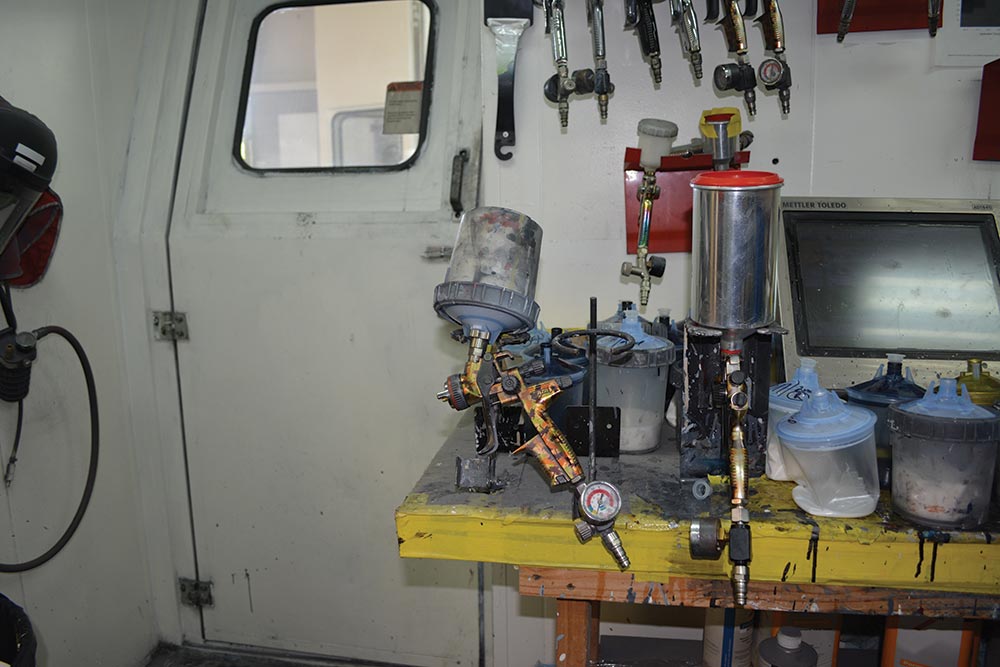
Use separate guns for waterborne basecoat versus clearcoat. Each has a different nozzle size to accommodate the differing viscosities of clear versus basecoat.
With solvent, you chose the reducer and your decision-making was basically done. With waterborne, you have more decisions to make. You have to consider ambient temperature and humidity at the time you will begin spraying, select the paint formula from among the choices provided by the ColorSystems software, and adjust a variety of additional factors to get the proper paint viscosity. See “Waterborne Spray Adjustments” sidebar for just a few examples of factors and spraying outcomes.
The ColorSystem paint guidelines offer recommendations on viscosity, gun distance from the surface, nozzle/fluid tip size, pressure settings, spray overlap, and how soon after spraying to start using extra air flow to flash the paint. The recommendations will differ for high temperature/high humidity conditions, which tend to result in drying too slowly, versus high temp/low humidity, which leads to drying too quickly. Study the ColorSystems guidelines, pick the recommendations that best match ambient temperature and humidity conditions in your booth, and follow them closely.
On a summer day with 95 deg. F. temperature and 90% humidity, the high humidity is slowing evaporation of the water from your paint. You can bump the booth temperature up to 100 deg. F. The 5 deg. F. increase will decrease the humidity by as much as one-third, down to 60%. The paint will apply better because it is not too wet, and will also dry faster. And you may be surprised to find that you can personally tolerate the 100 deg. F. temperature because the new lower humidity allows more evaporation of sweat from your body, just as it helps waterborne paint flash-off.
If it is a 30 deg. F. winter day, your compressed air likely started at no more than 10% humidity, and after being heated up to 70 deg. F., may be no more than 5% humidity when you begin spraying. If you cool the air down just 5 deg. F. to 65 deg. F., you will gain enough humidity to make paint application smoother. Then once paint application is complete and you are ready to dry it, a little bump up in temperature can pull the humidity out and speed flash-off.
Note that you’ll also need a good water filter and de-humidifier for your compressed air supply. If you don’t, you could have so much moisture being added directly to your paint that you actually alter its viscosity. In addition to causing application problems, excess moisture in your paint will slow drying.
Got Air Flow?

Portable air blowers are great for drying small areas, and for helping create horizontal air flow in the booth to create the turbulence that can speed overall drying.
BMW engineers design vehicle bodies with smooth surfaces and strategically placed, gentle curves that minimize air turbulence, reduce aerodynamic drag, and enhance driving dynamics and fuel economy. To maximize paint drying efficiency, you have to counter that aerodynamic slipperiness with air turbulence.
You’ll continue the laminar (downdraft) air flow at 120-400 fpm as occurred during spraying, and add horizontal air flow at 200-600 fpm. Check your ColorSystem documentation for cfm recommendations for the specific paint you are using.
The combination of two flow directions creates crosswinds, or turbulence, that breaks the envelope of air formed around the vehicle by the laminar air, and results in increased evaporation. It also helps speed drying of side panels, which otherwise can take longer than horizontal surfaces to reach the proper temperature for maximum evaporation. Once they master the air flow turbulence setup, painters routinely experience a 20-30% faster drying time.
Make sure that if you use blowers to push air horizontally during drying, your booth is ultra-clean. Increased air turbulence can lift dust and particulates off of the floor and other horizontal surfaces and add them to the air flowing over your wet paint film.
Learning Curve
A funny thing happened on the way to removing solvent from automotive refinish paint booths. After initial doubts about paint coverage, fears about materials cost, and worrying about the learning curve to achieve reduced drying times, aftermarket painters got used to waterborne paints and quickly fell in love with them. The most often heard reaction once the painter has a little experience with waterborne is, “I’ll never go back to solvent.” If you’re not already there, talk to your ColorSystem supplier.

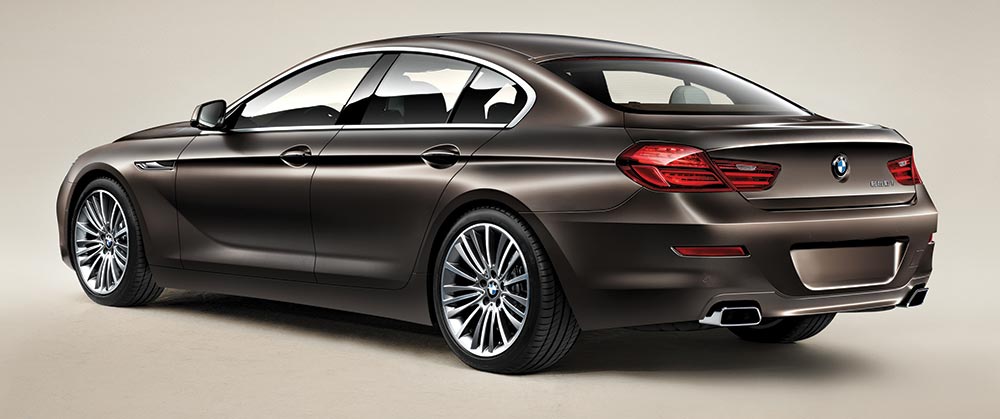



0 Comments